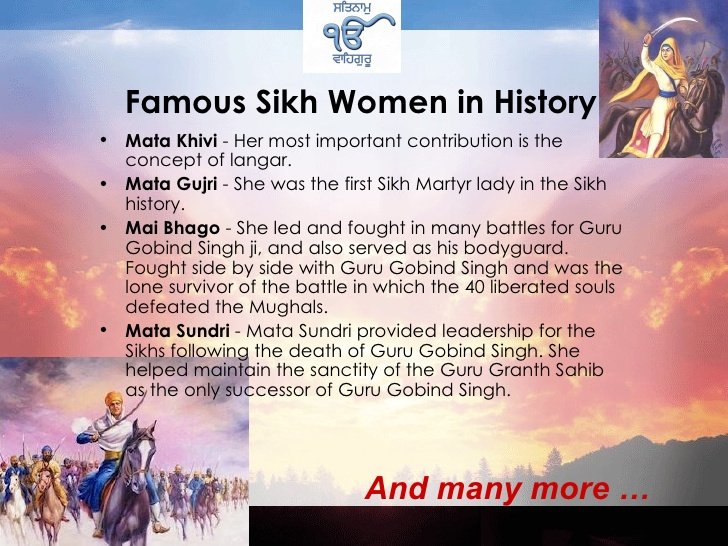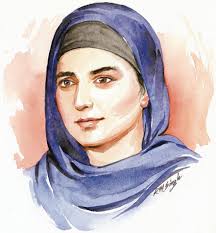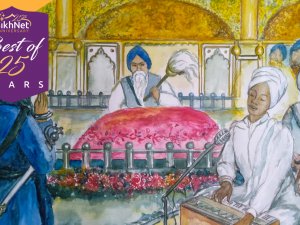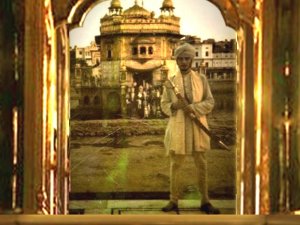Great Sikh Women
Four years ago, I set out to write a book about some of the famous, inspiring women of the Guru Panth. It was a challenge, searching through our his-tory, finding just a glimpse here and a glimmer there of the remarkable women who contributed to the early years of our Panth. I was also blessed to make the acquaintance by internet, by phone, and in person of some great souls still living among us. When I was recently asked to give a presentation at the University of Toronto on Sikh women, I instantly knew I should return that honour by presenting on the realities and challenges of the great Sikh women of our past, present and future.
Let us begin by asking who we consider to be a Sikh. Typically, we say that someone born into a Sikh home is a Sikh by default. There are also a rare few who have not been born into Sikh culture, but have nonetheless taken up Sikh beliefs and practices on a daily basis. Some Sikhs are visibly so; they can be recognized by their appearance. Others keep Sikh values in their hearts. Generally, we consider them all to be Sikhs.
What makes a woman, or any person for that matter, great? We may say great and noble actions. Activities that make a positive difference in the lives of others. Significant success in any endeavour.

Having established this as our template, let us appreciate the world of the first great women of the Guru Panth. Much, of course, has changed in the five hundred years since Bebe Nanaki first adored her younger brother, recognizing in him the light of God. The majority of us have since migrated from farming villages to industrial cities and towns. From closely-knit family and community ties, we now are widely dispersed, reaching out to each other electronically by texting and cell phone and email.
Family life too has changed. Mata Khivi, Bibi Amaro, Bibi Bhani, Mata Ganga, Mata Gujari, and Mata Krishan Kaur call out to us across centuries of blessings and troubles known to them, but impossible for us to imagine. In the days before ultrasounds and maternity wards, bottle feeding and cribs, daycares and kindergartens, childbirth and childrearing must also have varied a lot from what mothers experience in our time.
 The most famous woman of Sikh history may be Mai Bhago. Celebrated in story and song, there is even a Gurudwara built in her honour. She is today universally acclaimed. It is difficult for us however, living three hundred years later, to picture how people must at first have reacted when Mai Bhago challenged her husband and the other men who had forsaken Guru Gobind Singh, the lost souls we would eventually come to know as "the forty liberated ones." Like Guru Nanak Dev's pronouncement that there is no Hindu and no Muslim, like Guru Hargobind's establishment of the institution of Miri Piri, and like the Tenth Master's founding of the Khalsa, Mai Bhago's action flew in the face of established convention. And like their actions, it must have been controversial in its time.
The most famous woman of Sikh history may be Mai Bhago. Celebrated in story and song, there is even a Gurudwara built in her honour. She is today universally acclaimed. It is difficult for us however, living three hundred years later, to picture how people must at first have reacted when Mai Bhago challenged her husband and the other men who had forsaken Guru Gobind Singh, the lost souls we would eventually come to know as "the forty liberated ones." Like Guru Nanak Dev's pronouncement that there is no Hindu and no Muslim, like Guru Hargobind's establishment of the institution of Miri Piri, and like the Tenth Master's founding of the Khalsa, Mai Bhago's action flew in the face of established convention. And like their actions, it must have been controversial in its time.
Other great women of the Guru Panth have also courageously made their presence known and felt across the ensuing generations. Through difficult times, Mata Sahib Kaur and Mata Sundari together managed the affairs of the Khalsa in the early 1700s. A generation later, Rani Sahib Kaur bravely joined the forces of Patiala, Jind, Nabha and Kalsian to fend off the invading army of the Marathas, only to later be imprisoned and killed in the fort of Patiala, as a helpless woman. The 19th century witnessed the heroism of Rani Jindan as she did her best to safeguard her young son, Maharaja Daleep Singh from the predations of the imperial British. In the UK, her half-daughter, Princess Sophia boldly joined the suffragette struggle to give women the vote. Back in Punjab, poet Amrita Pritham gave an unforgettable voice to the dreams and heartaches of Punjabi speakers everywhere.
Thanks to changing social mores, the famously great women of the 21st century are less confined to private spaces than their forebears. In Amritsar, Dr. Inderjit Kaur today manages the busy affairs of Pingalwara and her gender is no constraint. In Jalandhar, Bibi Prakash Kaur raises abandoned baby girls at her unique home named after Bhai Ghanayya Ji. Not far away, Bibi Parmjeet Kaur Khalra carries on her work defending the rights of the oppressed.
Based in Britain, the Singh Twins showcase their thought-provoking art on three continents. In Afghanistan, Member of Parliament Dr. Honarkali Kaur Honaryar does her utmost to advocate for women oppressed in her country. American Bibi Krishna Kaur Khalsa, the only woman to have performed keertan in the Harimandir Sahib (in 1980), travels and shares her inspiration widely. Dr. Nikki Guninder Kaur Singh writes influential books and teaches religion at Colby College in America. Bibi Amrit Singh does fabulous human rights work at the American Civil Liberties Association. At Stanford University in the US, Bibi Manpreet Kaur, Assistant Professor of Psychiatry and Behavioral Sciences, fastidiously pushes back the boundaries of medical knowledge. Also in America, Bibi Shauna Singh Baldwin is an accomplished author of historical fiction. In Canada, we have Members of Parliament, Bibi Anju Dhillon, Bibi Bardish Chagger, Bibi Kamalpreet Khera, Bibi Ruby Sahota, and Bibi Sonia Sidhu. In the corporate world, Bibi Rani Turna is the Senior Vice President of CIBC, a major Canadian bank. Bibi Palbinder Kaur serves as the Amritdhari general counsel for the World Sikh Organization. We also have talented Sikh performers among us - singer Bibi Harshdeep Kaur of India, keertaniyaa Bibi Snatam Kaur Khalsa of the U.S., comedian Bibi Lilly Singh and actress Bibi Karenjit Vohra, both of Canada.
While some texts and internet sites would have us believe that Sikh women of extraordinary merit died out a couple of centuries ago, women of our faith today are making real contributions to the world, perhaps more than ever before. What is remarkable is that whereas Sikh heroines of the past were almost without exception wives and mothers, many of the accomplished Sikh women of our times remain unmarried. Clearly, for many strong and intelligent Sikh women who want to devote themselves to a calling or career, remaining single is a preferred option over a traditional Punjabi marriage with children and the attendant obligations of family care. Another new historical development is that, out of the eight accomplished women in this group who are known to be married, half have married non-Sikhs. For these women, marriage to a non-Punjabi also means living without Punjab's traditional social strictures.
Many Sikh women in the modern world find themselves at a crossroads. The principles of their religion as publicly stated and the values of secular society together guarantee their equality with men in every realm of life. Punjabi tradition, however, does not accord them equal participation in social or religious life. Conservative Punjabi culture prizes a woman's deference to the extent that it is considered a father's duty to kill an errant daughter rather than allow her to "smear the good name of the family." Even at birth, Punjabi social mores still silently condone the killing and abandonment of hundreds of baby girls every year.
In our globalized society, ignorance of the facts is longer a valid excuse. And there is really no place to hide. This is no longer a family matter that can be hushed up. The whole world now knows the horrific statistics of female abortions in Punjab. Canada's Doris R. Jakobsh and others have done credible and meticulous studies of Sikh women's role through history, including the debates (not settled until 1915) whether the women of the Panth could or could not be initiated into the Khalsa by the same khande dee pahul ceremony as their brothers. This research highlights the dynamic tension that has existed for centuries between the egalitarian ideals of our time and the male-dominated culture of historic Punjab.
While some would say that ambitious Sikh women let their families and their community down when they choose not to marry or to marry outside of the Panth, others may argue that it is the Panth that has let these women down by not treating them in accord with its own professed values. Granted, old habits can be hard to change. It is easy to pass a law forbidding the practice of dowry, but difficult to enforce. It is easy to campaign against female infanticide, but when the entire family into which a young woman has married and especially her mother-in-law, want her to abort a female fetus, it can seem there is no option but to submit.
If Sikh men want intelligent women to cherish and remain within the social confines of the Panth, that Panth should then also cherish and support them as valued members by giving them equal status and opportunity in all things. It is absurd that women are not encouraged to take a rightful place performing Gurbani keertan in all Gurdwaras, most principally, Sri Harimandir Sahib.
Why is this not allowed? Is it because, like the Taliban, orthodox rule-makers consider the sound of women's voices seductive even when they are singing divine keertan? Their voices could then be electronically distorted to remove any hint of their beauty. Is it because of their alluring faces that women keertaniyaa are not permitted as Hazooree Raagees? There could be a partition erected - or better still, the men in the Sadh Sangat could be required to have their eyes blindfolded during the raginis' performance. Or is it, as a brother suggested to me, that the keertaniyaa might be having their monthly menses and thus be "unclean" when they come to perform in that holy place? Incredible! When are we going to leave this hodgepodge of medieval thinking?
Are we forever to be constrained by the shackles of tradition? Because something has never happened before, are we to never allow it to happen? If Harimandir Sahib could be given electrical power in 1897 (but not without resistance from traditionalists) and democratic governance in 1925 (not without struggle and sacrifice), is it not time now in 2016 to allow inspired Sikh women to serve there on an equal footing with their brothers?
Many of us live in societies where secular education, pop culture, alcohol, drugs, and ever more seductive digital distractions challenge our ability to pass our religious values and practices on to our next generation. Unlike the communities of historic Punjab where Sikhi could be learned almost by osmosis, today only a steady example at home can inspire the replication of Sikh values in our children. If for this reason alone, the strength and self-assurance of Sikh wives and mothers should be more valued and nurtured today than at any time before.
Sikh women have come a long way against great odds in almost all walks of life. If the past hundred years have been any indication, they will increasingly claim their place in the world as inspired and creative contributors. Where social restrictions stand in their way, progressive women will use their intelligence, courage and ingenuity to find their way. For some, that will mean emigrating from Punjab to find places where their unique talents and genius are welcomed. For others, it could mean not marrying. Others still may choose to find a husband outside the Panth. Some may leave Sikhi altogether, or stay and live to see their children shed distinctive Sikh habits and ceremonies. A great many will stoically and silently bear the brunt of gender discrimination within the Panth, hoping for a better day.
Though diminished in numbers through heinous birth selection practices and denied equal opportunities, the great grand-daughters of Bibi Bhani and Mata Sahib Kaur can be expected to soldier onwards regardless. The world comprising human rights activists, feminists, sociologists, experts in comparative religion, and more, watch with curious anticipation. What awards and respect conservative Singh Sahibs and Granthis accord the women of today may be seen as awards and respect for us all. And whatever is denied the women and girls of this Panth, in truth, is denied each one of us as our destinies are inseparably intertwined, father and daughter, mother and son, for together we are the Guru Panth.
Editor's note: This article was originally published on June 20th 2016





